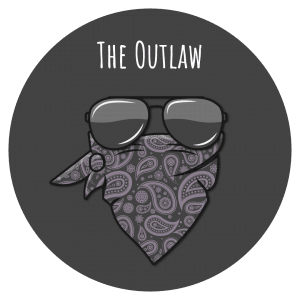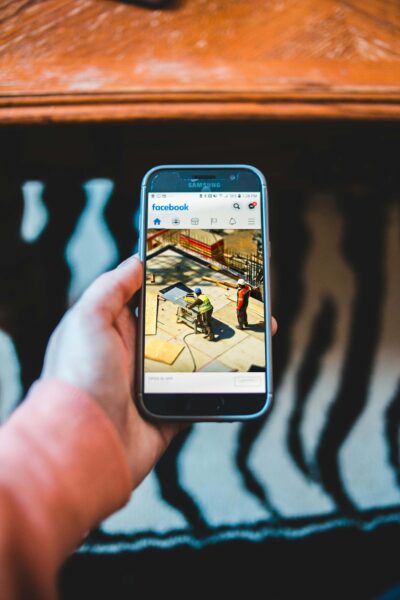A lot of people think your brand is just your logo, but there is so much more to a brand than what a single image can convey.
Your business’s brand consists of three elements: presentation, personality, and perception. Our Nashville-based brand marketing strategist breaks down each of the elements and explains how a deeper understanding of these concepts can improve your branding and marketing strategy, and ultimately, your marketing strategy and business success.

Presentation
Presentation is the way you present your brand to the world. This part of branding and marketing strategy does include your logo and all other aesthetic elements you use to dress your business for the world. Brand presentation elements include colors, fonts, and how you combine them all in your marketing strategy and branding materials like ads and landing pages – anything visual you use to represent your business.
The old adage, “never judge a book by its cover,” hasn’t changed the fact that most people do exactly that. While there is more to your brand than your presentation, how you show your brand to the world is important and will affect your prospects’ immediate impression of your business.
Since new prospects usually need to see your brand about seven times before deciding to purchase, your presentation must make a good impression not once, but multiple times in order to earn their interest and eventually, their trust.
For this reason, consistency in presentation is a must. Using inconsistent fonts or color combinations throughout your website and marketing materials can be a confusing brand marketing strategy to both potential and existing customers, and also make your business look unprofessional.
Remember that as important as presentation is to a branding and marketing strategy, it’s not everything. For example, think about the clothing you wear. It is a piece of your identity you share with the world, but it’s also just a small element of who you are and what you stand for. Your brand presentation is the same.
Personality
How do you communicate to your audience? With formal or casual language? Do you tell light-hearted jokes, share serious statistics, or a mixture of both?
This represents your brand’s personality. Your brand’s personality will be expressed through what your representatives say, the messages in your ads, how you talk to the press, how your business addresses social issues, etc.
 Brand personality is often expressed through a mixture of the 12 brand archetypes. A brand archetype is the personification of the values, mission, and story that encompass your brand. For example, the outlaw archetype is motivated by freedom from conformity and believes that rules were made to be broken. Harley Davidson specifically appeals to this archetype with its “All for freedom, freedom for all” slogan and use of informal, sometimes gritty language.
Brand personality is often expressed through a mixture of the 12 brand archetypes. A brand archetype is the personification of the values, mission, and story that encompass your brand. For example, the outlaw archetype is motivated by freedom from conformity and believes that rules were made to be broken. Harley Davidson specifically appeals to this archetype with its “All for freedom, freedom for all” slogan and use of informal, sometimes gritty language.
While the lover archetype, on the other hand, is motivated by intimacy and feeling desirable. Chanel and Victoria’s Secret appeal to their audience with promises of beauty, indulgence, and irresistible attraction.
So is it your brand or your customer who is the archetype? The answer is both. The key is to identify your ideal customer’s personality and align your brand with what best attracts that archetype – which can be a complementary archetype but is usually the same as the customer’s.
Most brands don’t speak from just one archetype. Usually, it’s a mix of two or three. Aligning your brand as closely as possible with a particular archetype or set of archetypes will allow you to communicate with your audience with consistency and humanity.
Perception
How does your audience see you? Not just in regards to personality, but also with regards to your brand’s reputation or character. What vibe do they get from reading between the lines and from watching how your brand handles situations?
Your brand isn’t just about what your business does, but how its actions are perceived. Make sure you can truly stand behind the things your business says it stands for. If you can’t deliver on what you tell your audience is important, or you take a stand on a social issue and then act the opposite way, you’re likely to receive a lot of negative backlash from prospective clients who now see a contradiction in your business messaging.
Robinhood, the easy-to-use, gamified app that made investing fun, is a great example. The company was named Robinhood, implying that it helps its clients to “rob from the rich and give to the poor,” just like the fictional character. In doing this, the organization aligned itself with the hero brand archetype.
However, when Robinhood chose to freeze its users’ trades during the Gamestop stock scandal, the company revealed that its priority appeared to be working with large hedge funds rather than helping the smaller investors make money.
The public’s perception of Robinhood was severely damaged, and there was a massive backlash from all the furious customers to whom Robinhood had blatantly lied. Ultimately, the Financial Industry Regulatory Authority fined Robinhood $70 million for misleading its customers.
How can I use the 3 Ps in my branding strategy?
Start by getting clear about your business’s “why.” Knowing what your business does isn’t enough. You need to clarify the why behind it all, the deeper purpose and meaning that motivates your brand. If you can’t define your why right now, there’s no chance your audience is going to be able to identify it either.

Once you have your why figured out, you’ll be better able to identify the target market you’re going to serve, and more specifically, the individual buyer personas. Take the time to study them and deepen your understanding of who they are, what archetypes they identify with, and what they really need.
With that deeper understanding of your brand’s why and your target market, you’ll have all the background information you need to create a brand marketing strategy that will showcase your brand’s personality to those who are most likely to respond positively to your marketing strategy.
Get help from a brand marketing strategist
Are you ready to use the 3 Ps of branding to improve your branding strategy? Our Nashville-based marketing brand strategist are ready to help you get clear on your brand’s why and target market so you can implement the 3 Ps to the greatest effect. Whether your brand is based in Nashville, Tennessee, or London, England, contact us today to take the first step toward a better strategy for branding your business.



